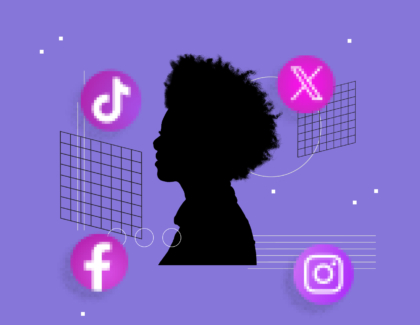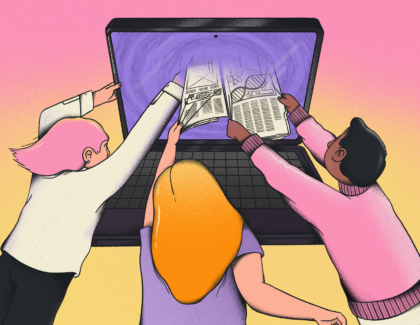Sign up for the daily CJR newsletter.
Since Elon Musk took over Twitter, in 2022, and renamed it X, the number of users has steadily declined. For journalists, who anecdotal evidence suggests are quitting in large numbers, the shift has been particularly profound.
“I feel like Twitter back in the day was kind of everything for journalists and writers—it was like a job board; place of idea generation; a little diary,” said P.E. Moskowitz, who writes the newsletter Mental Hellth and whose work has appeared in New York Magazine and The Nation, among other outlets.
“It was this kind of a social map slash org chart for understanding how, especially in New York, media works and who’s doing what and even who’s friends with who,” said Delia Cai, who runs the popular Substack newsletter Deez Links. “I can’t imagine starting out in media without that. It was a free orientation tool for the industry.”
For those who’ve worked freelance like Moskowitz and Cai, it was a place to test out ideas, amplify your work, and have conversations with other writers and editors. For publications and editors, it was a quick line to which topics were in the air, and perhaps to which lesser-known writers were out there.
“When we were rebooting Gawker, I discovered people through their tweets. Even if I just thought they were funny online, I would reach out to them and be like, ‘Are you interested in writing?’” Leah Finnegan, former editor of Gawker 2.0, said. “A lot of the time they were.” Natalie Shutler, the politics director at Slate, felt similarly. “I have definitely, over the years, had a few writers come to my attention through Twitter,” Shutler said. Maret Orliss, an assistant op-ed editor for the Los Angeles Times, cites its utility for finding quirky, niche stories—she remembers finding a thread about why the word-guessing game Wordle was so appealing from a philosophy professor whom she later commissioned to write a piece.
X, the Musk version of Twitter, is less of a discovery tool. “For the most part, it’s not a great source for editors when it comes to finding substantive ideas,” Shutler said. She spends very little time on the app now; her Twitter bio reads “here to observe.” Instead, she relies on Slate’s internal staff of writers and external roster of contributors. Finnegan, who is now an editor at Sherwood News, has had a similar experience. “This time around, I don’t think I’ve contacted a single person due to the content of their tweets,” she said.
Curators like Cai—her newsletter is a weekly annotated compilation of stories and sources she recommends, a genre that includes The Ann Friedman Weekly and Links I Would G-Chat Friends—have had to adapt too. “Links don’t even show up properly,” she said. “I had this personal crisis about: If we’re all reading each other’s stuff on Substack and then recirculating those links, does that just form a weird echo chamber where there just happens now to be more paywalls?”
Others, who used to use the site as a quick newsfeed—particularly useful for editors who are seeking leads that might turn into stories—have found that the quality of information has declined. Writer Tom Scocca instinctively tried to find information on X when Hurricane Milton hit Florida last month. “That brought home what an information cesspool Twitter has turned into,” he said. He turned to the Tampa Bay Times instead.
“One of the things I would do when breaking news was happening would be to go look at Twitter, both for my own information and to potentially see if there might be some thoughts that could turn into a piece,” said Orliss, the LA Times editor. “Now that’s not my response anymore.”
But what some lament, others celebrate as a liberation. “Sourcing and linking to tweets as sufficient evidence of a conversation, or a thing worth reporting on, I found even in the heyday of that ecosystem to be unproductive and limiting,” said Shamira Ibrahim, a writer and editor at Africa Is a Country. To Ibrahim, it takes away from the practice of nurturing beats and sources in depth. “I think social media is always going to be part of the story, but not the whole story, and I try to engage with writers who understand that or help them get to that place.”
She feels that Twitter and other social media fed into a larger problem in the industry. Editors want more work, faster, and can start to see clicks and engagement as the only measure of success. “That’s the whole ethos of its technology—you’re supposed to scale, scale, get bigger, bigger,” Ibrahim said. “That is all fine, but it’s also predicated on the lack of value of creativity, because writing is a creative process; it requires thinking.” When you had to keep up with Twitter, Twitter became the only way to do it. “Ultimately, when we respond to a digital economy that is dictated by Silicon Valley private equity, it’s not about becoming better at your practice but becoming better at serving a technology.”
Though most journalists have kept their accounts on X, many have moved on spiritually. “I stopped posting there, but I kept my account because I had been told that if you erase it, somebody can pick up your handle and start posting as you,” Maria Bustillos, who started the newsletter Flaming Hydra, said. She’s now on Bluesky and Mastodon, where she says it is much easier to connect with people, a facility Musk’s X has more or less put behind a paywall. For Moskowitz, leaving was sad but ultimately in their best interest, because “it doesn’t make you smarter.” They now read the New York Times, despite the fact that it retains a flavor of high-speed groupthink. At Robinhood, whose magazine Finnegan edits, Threads is getting more use.
Cai sees elements of the Twitter ecosystem in Substack. “It’s a lot like Twitter, where it doesn’t matter if you tweeted the same link as someone else, because the whole point was to see who is reading the big long-form story and what they’re saying about it,” she said. But instead of happening on one timeline, it’s happening across multiple newsletters, which she says makes conversations harder and more expensive to keep track of, despite Substack’s version of a quicker feed.
In the end, finding a replacement might not even matter. “Not to be dramatic, but I think social media writ large is dead,” Moskowitz said. “The fun and usefulness of it is not what it was.” Many believe things will continue to become more atomized, walled off and replaced with subscriptions.
Moskowitz, who is writing a book about the role of drugs in society, offers this analogy to friends about the role of good Twitter and bad X. “You’re in a meth house, and everyone’s arguing over taking apart the toaster oven, and then you stop doing meth, and you drive by that meth house and you’re like, Why does everyone care about the toaster oven? Once you’re on the outside, you’re like, What is everyone talking about?”
Has America ever needed a media defender more than now? Help us by joining CJR today.







